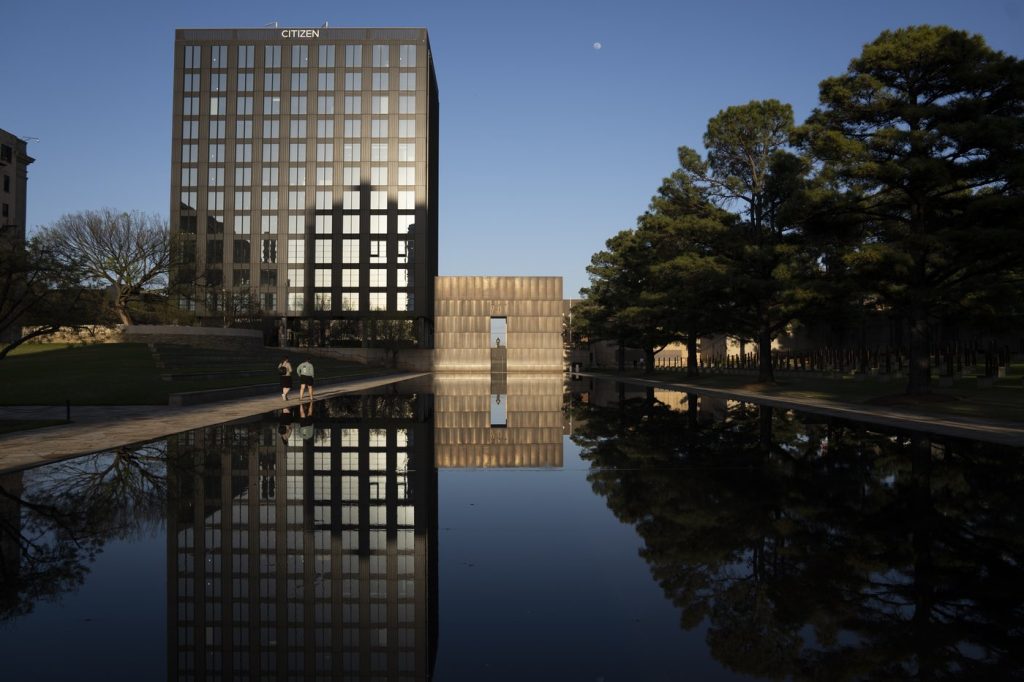OKLAHOMA CITY (AP) — On April 19, 2025, the nation will mark the 30th anniversary of the devastating Oklahoma City bombing, which claimed the lives of 168 people and remains the deadliest domestic attack on American soil. The repercussions of that horrific day continue to resonate, leaving deep emotional scars on survivors and families of the victims.
The attack was orchestrated by Timothy McVeigh and Terry Nichols, two former U.S. Army acquaintances. Their hatred for the federal government was intensified by events such as the deadly raid on the Branch Davidians in Waco, Texas, and the Ruby Ridge standoff in Idaho, which resulted in the deaths of a young boy, his mother, and a federal agent. In the aftermath, the Oklahoma City bombing exposed the country to the real threats posed by extremist ideologies. However, many survivors express concern that today’s escalating anti-government sentiments in politics could potentially lead to further violence.
A remembrance ceremony is set to be held on the grounds of the Oklahoma City National Memorial Museum on April 19, 2025, serving as a solemn reminder of the lives lost and altered forever.
Among the tragic stories is that of Baylee Almon, a victim who was just one day past her first birthday when her mother, Aren Almon, dropped her off at the America’s Kids Daycare within the Alfred P. Murrah Federal Building. The following day, Aren learned her daughter had died when she saw a photo of Baylee being carried by a firefighter. The image became emblematic of the innocent lives taken that day, though Aren insists her daughter was much more than a symbol. "Baylee was a real child," she said, highlighting the profound personal loss.
Firefighter Chris Fields was at the scene of the bombing, and the now-iconic photograph of him holding Baylee's lifeless body captured the hearts and minds of the nation. Fields recalls the harrowing moment as one where he was acutely aware that a family’s life was irrevocably changed. Despite his ongoing focus on family life, Fields acknowledges the possibility of similar attacks being motivated by radical political ideologies in the future.
PJ Allen, one of the youngest survivors at only 18 months old when the bombing occurred, still bears visible scars from his injuries, which included severe burns and lung damage. Today, he works as an avionics technician at Tinker Air Force Base in Oklahoma City. He reflects on his experience with gratitude, appreciating every day he wakes up, acknowledging the luck he had compared to many unfortunates who did not survive.
Another poignant account comes from Austin Allen, who was only 4 years old when his father died in the bombing. His memories of his father, Ted L. Allen, are fragmented, primarily consisting of anecdotes relayed by family and friends. Now a father himself, Austin grapples with how modern politics echoes the divisiveness of 1995, expressing concern over the implications of the heightened anti-government rhetoric prevalent today.
Dennis Purifoy, a retired assistant manager at the Social Security office located in the same building, lost 16 coworkers and 24 customers during the bombing. Despite not recalling the moment of the explosion, he acknowledges how the attack shattered the illusion of safety and innocence that many held. Purifoy emphasizes the need to recognize the dangers of conspiracy theories and radical beliefs, which can lead to tragic outcomes, as exemplified by the Oklahoma City bombing.
The Oklahoma City bombing remains a watershed moment in American history, prompting ongoing discussions about the intersection of political discourse and potential violence. As the anniversary approaches, the memories and stories of those affected serve as a stark reminder of the fragility of life and the enduring scars left by tragedy.










